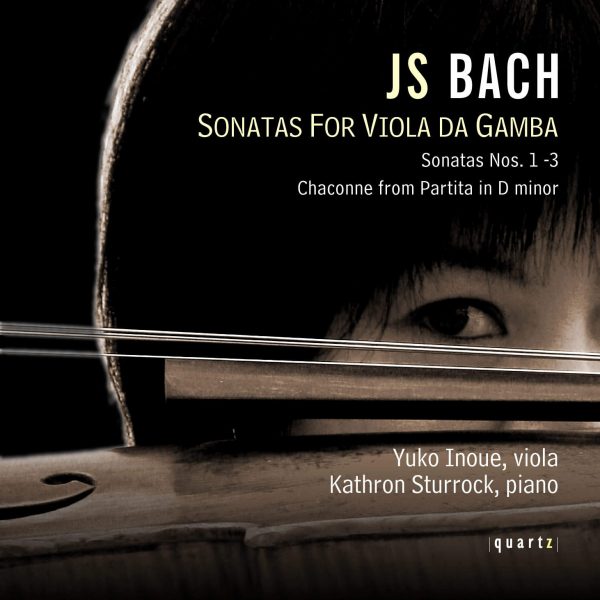Goldberg Variations
£7.99 – £14.99
JS Bach
Goldberg Variations
Bach’s Goldberg Variations consists of an aria and 30 dazzling variations. The opening aria is a highly ornamented Sarabande. Melodic contour is wonderfully crafted as Bach explores a descending five-note pattern in a typically French style. However, from the first variation it becomes clear that melody is not the theme. Instead Bach produces variations on the bass line and its chord progression. In other words, it is a harmonic universe that Bach explores.
The thirty variations are generally divided into three groups: dance, canon and arabesque. Every third variation in the set is a canon that increases by its intervallic answer, beginning at the unison until Variation 27 which is a canon at the ninth. This final canon is particularly impressive as Bach leaves out the bass line, leaving a ‘pure’ canon between the upper voices. Such a feat is in itself a contrapuntal exercise in genius; more so as these variations are not heavy with cerebral skill, but instead, dance with sparkling lightness.
Tōru Takemitsu
Rain Tree Sketch No. 2
Tōru Takemitsu composed his Rain Tree Sketch II in 1992, in memory of Olivier Messiaen, the French composer who was a strong influence on Takemitsu. The title of the work was probably inspired by a quotation from a novel by Kenzaburo Oe, Atama no ii, Ame no Ki: “it was named the ‘rain tree’, for its abundant foliage continued to let fall rain drops from the previous night’s shower until the following midday. Its hundreds of thousands of tiny, finger-like leaves store up moisture, whereas other trees dry out at once.” The work is a dreamy meditation on the flow of life, and was Takemitsu’s last piano piece.
About This Recording
GOLDBERG VARIATIONS, BWV 988 JOHANN SEBASTIAN BACH (1685–1750)
In all its unlikeliness, the story surrounding Bach’s Goldberg Variations is one of continual enchantment. As legend goes, Bach composed the Variations for Johann Gottlieb Goldberg and his employer, the Count Kaiserling. On his visits to Leipzig, the Count suffered from insomnia. Goldberg was called to play clavier pieces for him, to lift the Count’s spirits on these sleepless nights. Bach’s Variations, ‘soothing and cheerful in character’, were supposedly written for this purpose. Though this tale is unlikely – Goldberg was only 14 years old when Bach published his work in 1741 – it has become a charmingly integral part of the work’s cultural form.
However, such a light-hearted anecdote is somewhat misleading: this is a work of monumental scale. Upheld as one of the greatest examples of variation form, Bach’s Goldberg Variations consists of an aria and 30 dazzling variations. The opening aria is a highly ornamented Sarabande. Melodic contour is wonderfully crafted as Bach explores a descending five-note pattern in a typically French style. However, from the first variation it becomes clear that melody is not the theme. Instead Bach produces variations on the bass line and its chord progression. In other words, it is a harmonic universe that Bach explores.
The thirty variations are generally divided into three groups: dance, canon and arabesque. Every third variation in the set is a canon that increases by its intervallic answer, beginning at the unison until Variation 27 which is a canon at the ninth. This final canon is particularly impressive as Bach leaves out the bass line, leaving a ‘pure’ canon between the upper voices. Such a feat is in itself a contrapuntal exercise in genius; more so as these variations are not heavy with cerebral skill, but instead, dance with sparkling lightness.
After each canon variation, Bach presents different Baroque types. Rhythmic features, melodic turns and contrapuntal devices evoke the different characters and generic profiles. After each character variation, we are treated to an ‘arabesque’. These lively movements are experiments in keyboard physicality. Bach explores devilish finger patterns within moto perpetuo sections, adorned with virtuosic hand-crossing. By juxtaposing canon and arabesque, it is as if Bach presents the Cartesian duality of mind and body, allowing us to decide: which is more impressive?
After this cycle of canon-character piece-arabesque is completed nine times, the final variation (Number 30) is a quodlibet, a combination of these features. Bach’s quodlibet is based on a number of German folk songs. Such an assemblage almost definitely evokes the Bach family’s custom of improvised singing at their family reunions. As such, Bach ends his cycle with jovial informality – that is, before the recapitulation of the Aria. Such a return holds an infinity of interpretations: it can be melancholic, wistful, nostalgic, sad, renewing – depending on both performer and listener. However, as Glenn Gould suggests, this is ‘music which observes neither end nor beginning, music with neither real climax nor real resolution’. Perhaps we must simply accept that the Goldbergs have said farewell simply as they said hello, and hope that they will return again.
RAIN TREE SKETCH II TORU TAKEMITSU (1930–1996)
Toru Takemitsu composed his Rain Tree Sketch II in 1992, in memory of Olivier Messiaen, the French composer who was a strong influence on Takemitsu. The title of the work was probably inspired by a quotation from a novel by Kenzaburo Oe, Atama no ii, Ame no Ki: “it was named the ‘Rain tree’, for its abundant foliage continued to let fall rain drops from the previous night’s shower until the following midday. Its hundreds of thousands of tiny, finger-like leaves store up moisture, whereas other trees dry out at once.” The work is a dreamy meditation on the flow of life, and was Takemitsu’s last piano piece.
The work is in a clear ABA (ternary) form, with a rhythmic opening which is reprised after the melodic middle section. Its tonal language is redolent of Debussy and Messiaen, with chords used for colour and timbre rather than strict harmonic progression and, like its dedicatee, Takemitsu employs recurring motifs (such as an ascending three-note broken chord figure) and well-placed silences to create atmosphere and colouristic shadings. Directions such as “celestially light” and “joyful” contribute to the metaphysical nature of this work.
—Reiko Fujisawa
Track Listing
-
Johann Sebastian Bach: Goldberg Variations, BWV 988
- Aria (04:08)
- Variation 1 —a 1 Clav. (01:46)
- Variation 2 —a 1 Clav. (01:38)
- Variation 3 —Canone all’Unisono. a 1 Clav. (01:56)
- Variation 4 —a 1 Clav. (01:06)
- Variation 5 —a 1ô vero 2 Clav. (01:30)
- Variation 6 —Canone alla Seconda. a 1 Clav. (01:38)
- Variation 7 —a 1ô vero 2 Clav. al tempo di Giga (02:24)
- Variation 8 —a 2Clav. (01:47)
- Variation 9 —Canone alla Terza. a 1 Clav. (02:07)
- Variation 10 — Fughetta. a 1 Clav. (01:42)
- Variation 11 — a 2 Clav. (02:08)
- Variation 12 — a 1 Clav. Canone alla Quarta in moto contrario (02:26)
- Variation 13 — a 2 Clav. (03:00)
- Variation 14 — a 2 Clav. (02:12)
- Variation 15 — Canone alla Quinta. a 1 Clav.: Andante (04:35)
- Variation 16 — Ouverture. a 1 Clav. (02:50)
- Variation 17 — a 2 Clav. (01:49)
- Variation 18 — Canone alla Sesta. a 1 Clav. (01:31)
- Variation 19 — a 1 Clav. (01:30)
- Variation 20 — a 2 Clav. (01:58)
- Variation 21 — Canone alla Settima (03:11)
- Variation 22 — a 1 Clav. alla breve (01:36)
- Variation 23 — a 2 Clav. (02:06)
- Variation 24 — Canone all'Ottava. a 1 Clav. (02:40)
- Variation 25 — a 2 Clav.: Adagio (04:51)
- Variation 26 — a 2 Clav. (02:12)
- Variation 27 — Canone alla Nona. a 2 Clav. (01:43)
- Variation 28 — a 2 Clav. (02:25)
- Variation 29 — a 1ô vero 2 Clav. (02:10)
- Variation 30 — a 1 Clav. Quodlibet (01:47)
- Aria da Capo (02:18) Tōru Takemitsu: Rain Tree Sketch II
- Rain Tree Sketch No 2 (05:04)




